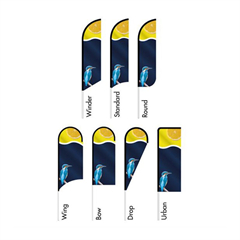1. Choose Recycled Paper: Opt for recycled or FSC-certified paper with high post-consumer content. This reduces the demand for virgin materials and supports responsible forestry practices.
2. Minimize Paper Waste: Plan your layout carefully to minimize paper waste during printing. Consider using smaller sizes or duplex printing to make the most of each sheet.
3. Digital Distribution: Prioritize digital distribution over print whenever possible. Share your brochure via email, your website, or social media to reduce paper consumption.
4. Soy or Vegetable-Based Inks: Use eco-friendly inks made from soy or vegetable-based sources. These inks are less harmful to the environment compared to traditional petroleum-based inks.
5. Simple Designs: Choose clean and simple designs with fewer colors and intricate details. This not only reduces printing complexity but also conserves resources.
6. Minimal Packaging: If mailing the brochure, use minimal and recyclable packaging materials. Avoid plastic and excess packaging.
7. Energy-Efficient Printing: Work with printing companies that use energy-efficient practices and equipment. Some printers also offer eco-friendly printing options.
8. Waterless Printing: Consider waterless printing methods that reduce water consumption and chemical waste.
9. Include Sustainability Messaging: Share information within the brochure about your commitment to sustainability and eco-friendly practices. Educate your audience on the importance of environmentally conscious choices.
10. Eco-Friendly Design Software: Use design software that promotes sustainable practices, such as tools that allow you to measure carbon footprint or choose greener options.
11. Upcycling and Repurposing: Design your brochure in a way that encourages recipients to repurpose or upcycle it after use, reducing waste.
12. Collaborate with Eco-Organizations: Collaborate with local environmental organizations or initiatives. This can help you connect with a like-minded audience and promote eco-conscious messaging.
13. Consider Digital Interactive Elements: Instead of printing physical brochures, create interactive digital brochures with multimedia elements that are easy to share and have a lower environmental impact.
14. Sustainable Finishes: If using finishes like varnish or lamination, opt for eco-friendly options. Some finishes are biodegradable or made from renewable materials.
15. Environmental Certifications: Look for printing companies that have environmental certifications, such as FSC or ISO 14001, indicating their commitment to sustainable practices.
By prioritizing sustainable materials, reducing waste, and making environmentally conscious choices throughout the design and production process, you can create a brochure that reflects your commitment to environmental responsibility while effectively conveying your message.


























